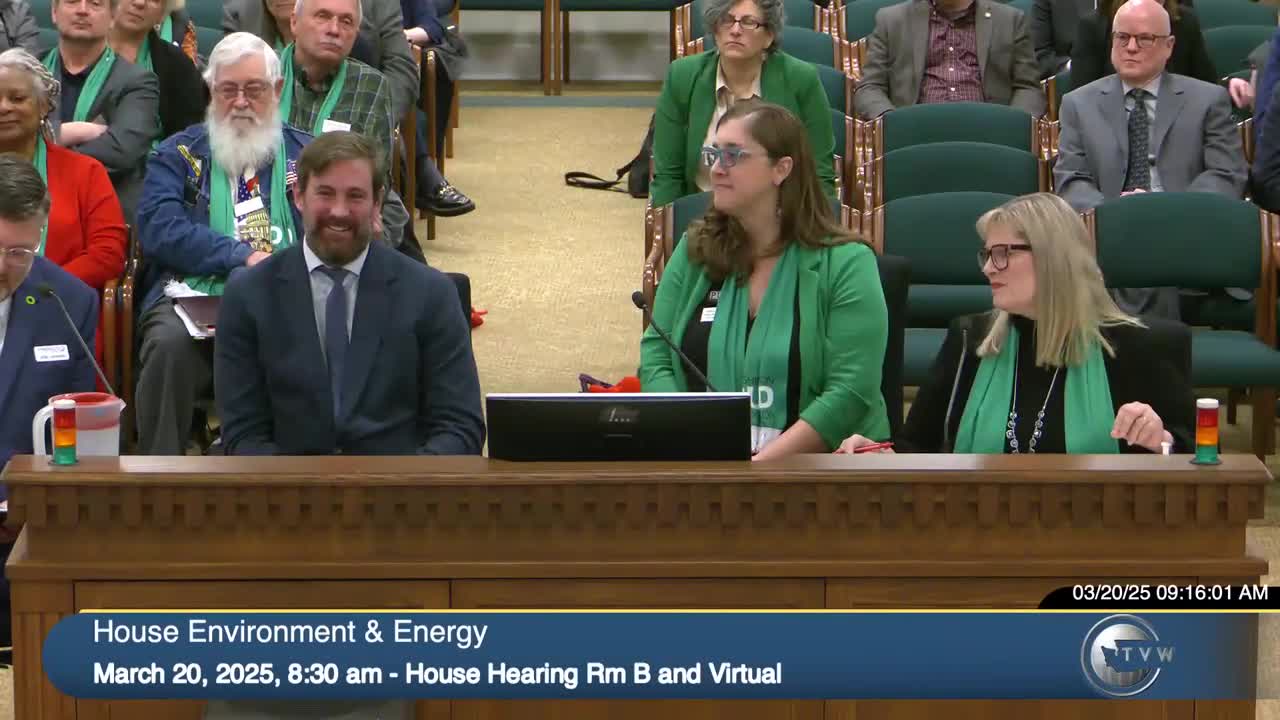Ameresco announces local projects to enhance energy infrastructure and support job growth
March 20, 2025 | Environment & Energy, House of Representatives, Legislative Sessions, Washington
This article was created by AI summarizing key points discussed. AI makes mistakes, so for full details and context, please refer to the video of the full meeting. Please report any errors so we can fix them. Report an error »

In a recent meeting of the House Environment & Energy Committee, discussions centered on the urgent need for infrastructure investment to support Washington's energy transition. The focus was on distributed energy resources, which are seen as vital for meeting community energy needs as the state moves towards decarbonization.
A representative from Ameresco highlighted several ongoing projects, including a microgrid in Olympia and the largest battery energy storage system in the state, aimed at enhancing local energy resilience. The representative emphasized the importance of hiring local subcontractors, stating that building energy assets creates jobs in the community, unlike trading renewable energy credits.
The committee also addressed the potential impacts of climate variability, particularly the uncertainty surrounding drought conditions due to shifts in weather patterns. With projections indicating a possible 30% increase in energy demand over the next decade, the urgency for infrastructure development was underscored. The state’s energy strategy anticipates a 50% increase in demand by 2050, prompting discussions on the need for immediate action.
Emerging technologies such as nuclear, fusion energy, and geothermal were mentioned as future solutions, but the committee recognized the necessity of implementing current strategies to create jobs and address immediate energy challenges. The proposed legislation aims to facilitate this by investing in local communities, thereby providing real job opportunities in the short term.
As Washington continues to navigate its energy future, the outcomes of this meeting signal a commitment to proactive measures that not only address environmental goals but also support local economies. The committee's focus on infrastructure investment reflects a broader strategy to ensure that communities are equipped to handle the evolving energy landscape.
A representative from Ameresco highlighted several ongoing projects, including a microgrid in Olympia and the largest battery energy storage system in the state, aimed at enhancing local energy resilience. The representative emphasized the importance of hiring local subcontractors, stating that building energy assets creates jobs in the community, unlike trading renewable energy credits.
The committee also addressed the potential impacts of climate variability, particularly the uncertainty surrounding drought conditions due to shifts in weather patterns. With projections indicating a possible 30% increase in energy demand over the next decade, the urgency for infrastructure development was underscored. The state’s energy strategy anticipates a 50% increase in demand by 2050, prompting discussions on the need for immediate action.
Emerging technologies such as nuclear, fusion energy, and geothermal were mentioned as future solutions, but the committee recognized the necessity of implementing current strategies to create jobs and address immediate energy challenges. The proposed legislation aims to facilitate this by investing in local communities, thereby providing real job opportunities in the short term.
As Washington continues to navigate its energy future, the outcomes of this meeting signal a commitment to proactive measures that not only address environmental goals but also support local economies. The committee's focus on infrastructure investment reflects a broader strategy to ensure that communities are equipped to handle the evolving energy landscape.
View full meeting
This article is based on a recent meeting—watch the full video and explore the complete transcript for deeper insights into the discussion.
View full meeting
